2022-04-02


Q1:How did China Unicom contribute to the success of the 2022 Beijing Winter Olympics?
LI ling:As the only official telecommunication service partner of the Games, China Unicom provided services that are primarily categorized into two types, namely — basic communication support and the innovative application of technologies.
On the one hand, with 42 support teams involving 5000 people, we established a specially-dedicated communication network for the Games that was safe, stable, reliable and efficient. Our Winter Olympics Telecom Technology Operation Center (TTOC) performed real-time monitoring, inspection, scheduling and services for the communication & information networks at 87 Olympic venues and surrounding facilities in all three game areas in Beijing and Zhangjiakou. This reliable communication network formed a solid foundation that ensured a successful Winter Olympics empowered by science and technology.
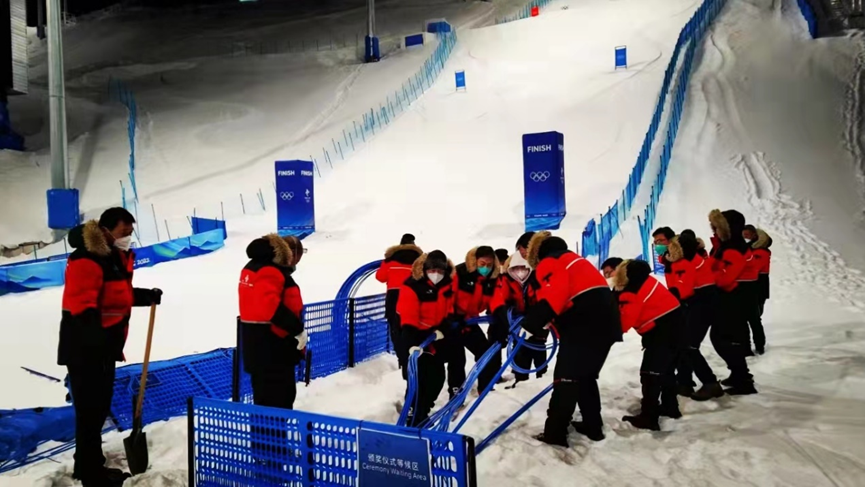 ▲ Construction of China Unicom telecommunication network dedicated to the Beijing Olympics
▲ Construction of China Unicom telecommunication network dedicated to the Beijing Olympics
On the other, taking advantage of China Unicom’s 5G network and its supreme capabilities in connectivity, computing, big data, technology application and safety control, we introduced new technologies to 16 highly innovative scenarios, such as the establishment of the Winter Olympics Data Exchange and Sharing Platform, “5G + Beidou” intelligent vehicle network, 5G plus Cloud broadcasting, panoramic “bullet time” and smart game venues, just to name a few. I think the application of new and modern technologies to the Beijing Winter Olympics really helped in demonstrating China’s scientific and technological strength to the world.
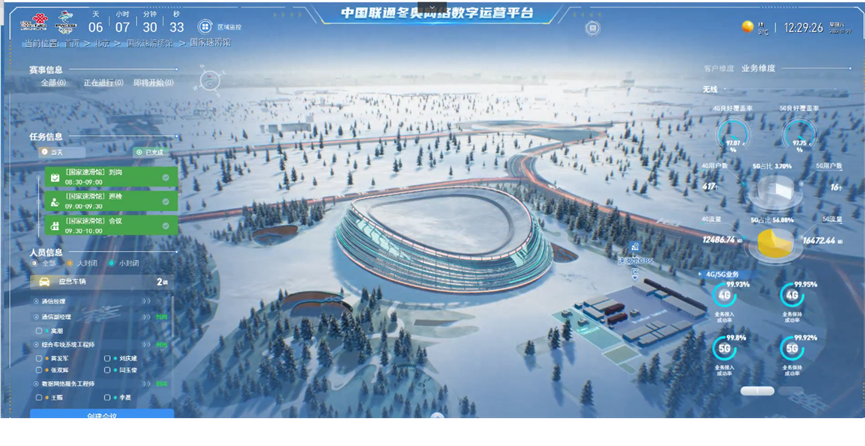 ▲China Unicom Digital Network Operation Platform for the Beijing Olympics
▲China Unicom Digital Network Operation Platform for the Beijing Olympics
Q2:With the evolution of broadcasting technology and methods, the habits of viewers when watching sports games must have changed over time. What do you think are the current trends in such regard? How does China Unicom adapt to these novel changes?
LI ling:The future, I believe, lies in the seamless coordination between the information/communication technologies and the organization of the games. For one thing, the viewing methods of sports games will become increasingly diverse. For another, because of the audience’s relentless pursuit of stimulated viewing sensations, ultra-high definition video footage, immersive experience, multi perspective/panoramic video filming are becoming the norm to achieve an enriched visual experience. Consequently, we can expect the broadcasting of sports games in the future to create higher requirements for network quality, technology, production and equipment.
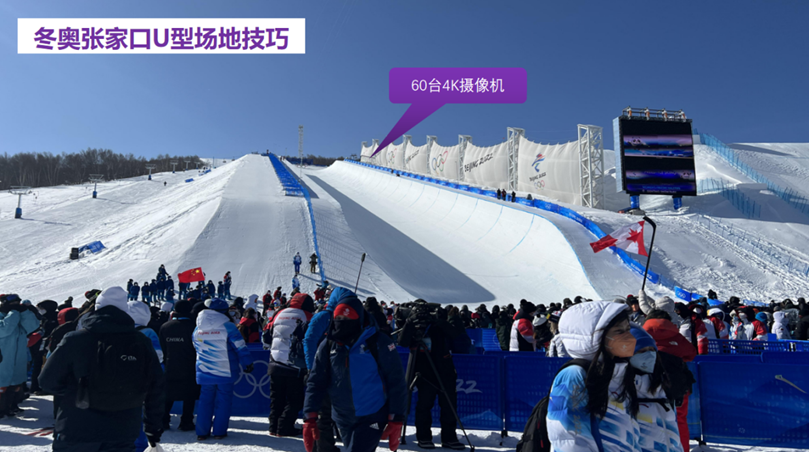 ▲Panoramic “bullet time” backed by China Unicom 5G Cloud broadcasting technology at half-pipe arena
▲Panoramic “bullet time” backed by China Unicom 5G Cloud broadcasting technology at half-pipe arena
With the support of the Beijing Municipal Government, China Unicom set up the Beijing International Cloud Broadcasting Technology Co., Ltd. in 2020, a subsidiary of China Unicom specifically for the Beijing Winter Olympics. Backed by our 5G network and Cloud broadcasting technologies, we were able to provide a variety of services for the Games. For example, we deployed 120 4K cameras at the aerials and half-pipe arenas in the Zhangjiakou game area. Through the 5G network known for its large bandwidth and low latency, UHD video footages were uploaded concurrently to the Cloud where they were synthesized in seconds using AI technologies, producing “bullet time” videos that captured the finest detail of sports actions, thrills and excitement in real time and broadcast them as they happened. All of us experienced the wonderful visual impact of “bullet time” on TV when we watched Qi Guangpu and Eileen Gu win their gold medals at the aerials and half pipe arenas. It was a visual feast backed by science and technology, presented to you by China Unicom!
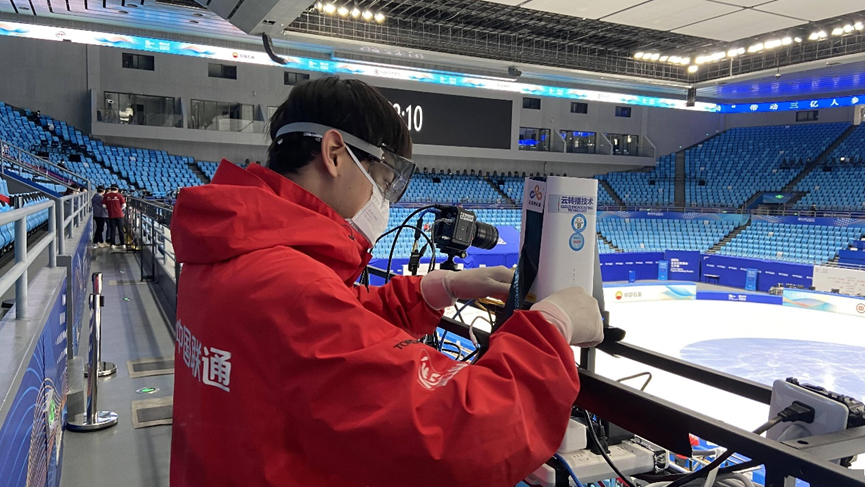 ▲Deployment of devices for 5G Cloud broadcasting at an Olympic test event
▲Deployment of devices for 5G Cloud broadcasting at an Olympic test event
Q3:People joke that every ski trail ends at an orthopedic clinic. Because there is certain risk in ice and snow sports, timely and professional on-site emergency aid is essential. How were communication technologies applied to the rescue and medical assistance during the Beijing Olympics?
LI ling:Alpine skiing can be extremely dangerous. Dashing at 140 km/h, athletes face the risk of severe injuries. It is said that injury rate can be as high as 14%. China Unicom built a 5G Smart Medical Responding System for the Beijing Winter Olympics which enabled record sharing and coordination between multiple departments, improving the efficiency of medical resources and emergency transport.
When an athlete was injured, a doctor would enter the arena single-handedly wearing the China Unicom 5G individual equipment with a front-end camera recording every process of the emergency treatment. The video would be transmitted to the hospital command center in real time through the 5G network. In addition to usual medical equipment such as the ECG monitor, the 5G ambulances were equipped with 5G gateways and cameras, among other devices, for data collection and for real-time consultation with the hospital command center. The 5G Smart Medical Responding System provided medical assistance to injured athletes from many countries during the Beijing Winter Olympics. By shifting the diagnosis forward to the very moment when the on-site doctor first met the injured, the latter were able to receive proper hospital treatment the moment they get into an ambulance.
 ▲China Unicom 5G Smart Medical Responding System empowered the rescue and medical assistance during the Beijing Olympics
▲China Unicom 5G Smart Medical Responding System empowered the rescue and medical assistance during the Beijing Olympics
Q4:Can you elaborate on the “Smart Winter Olympics” concept that was put forward by China Unicom? Now that the Games had come to a successful conclusion, which “Smart Winter Olympics” technologies can be expected to last and applied to everyday life?
LI ling:In addition to the Cloud broadcasting technology and 5G Smart Medical Responding System that we have just discussed, China Unicom provided technical services all through the Games — covering all links and aspects including the organization, participation and spectating. Known for our superior big data capability, we produced the Winter Olympic Data Exchange and Sharing Platform. As the data center of the Beijing Winter Olympic Organizing Committee, the Platform was devoted to the aggregation, sharing and application of multi-sourced data, providing comprehensive, complete and accurate data support for the smart organization of the Games. We created a 5G Intelligent Vehicle Network System as part of the National Science and Technology Project for the Winter Olympics. The System was not only applied in about 10 service scenarios at the ShouGang Park such as unmanned shuttle, unmanned retail, unmanned logistics and autonomous parking, but also succeeded in achieving the first 5G unmanned vehicle torch relay in the Olympic history. The Press Conference Video Service System we built for the Beijing Olympics enabled concurrent video transmission to a large number of users through CDN (Content Delivery Network).
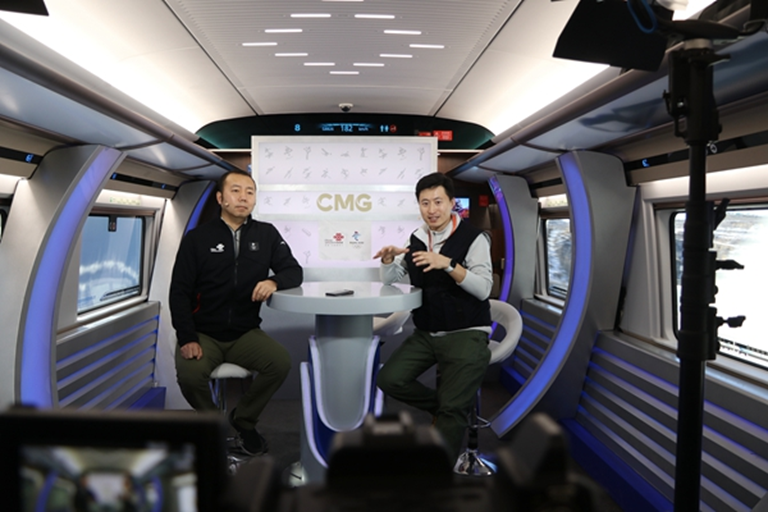 ▲4K Ultra HD studio on the Beijing-Zhangjiakou high-speed train supported by China Unicom 5G network slicing technology
▲4K Ultra HD studio on the Beijing-Zhangjiakou high-speed train supported by China Unicom 5G network slicing technology
 ▲China Unicom visual command platform enabled efficient management at Wukesong Ice Hockey Sports Center
▲China Unicom visual command platform enabled efficient management at Wukesong Ice Hockey Sports Center
We constructed a 4K UHD studio based on 5G network slicing technology on the Beijing-Zhangjiakou high-speed train, demonstrating three of China’s leading technologies at once, namely the 5G, the high-speed railway and the Ultra HD. The visual command platform we deployed for the Wukesong Ice Hockey Sports Center improved venue management and achieved synchronized scheduling on both the inside and the outside of the venue through 5G + AI remote collaboration…
With our efforts in communication and technology support, the application of science and innovation was ubiquitous during the Beijing Winter Olympic Games. We now see the application of many of these successful practices in the culture and tourism industry. To my knowledge, the Department of Culture and Tourism of Guangxi is using our Cloud broadcasting technology for HD livestream of all 4A and 5A scenic spots within the Autonomous Region. The Yanoda Rainforest Cultural Tourism Zone in Hainan, Longmen Grottoes in Henan and the Xining Garden Expo all deployed unmanned shuttle and retail vehicles powered by our 5G intelligent vehicle network.
As well, the panoramic “bullet time” is expected to be used for webcasting, which is currently done by many performing art theaters. The visual command platform that we deployed for the Olympic stadiums will also serve the organization of cultural expos. The 5G network slicing technology will make personalized online services possible at tourism destinations. I believe the scientific and technological legacy of the Beijing Winter Olympics will enable many other industries and create strong impetus in the development of smart culture and tourism.